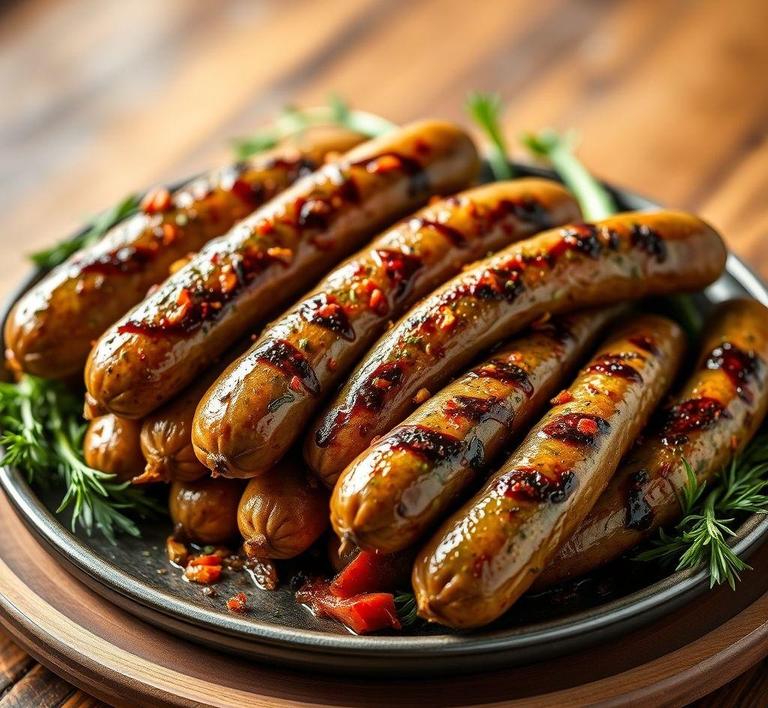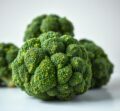So, you’ve cooked up a batch of veggie sausages but have leftovers you want to store for later? Refreezing veggie sausages can be a great way to avoid waste and enjoy them at another time, but it’s not as straightforward as just tossing them back in the freezer. To ensure they stay delicious and safe to eat, there are a few important tips and tricks you should know. From how to handle them before freezing to the best ways to reheat, this guide will walk you through everything you need to know about safely refreezing veggie sausages without compromising on taste or texture!
Can You Refreeze Veggie Sausages?

Refreezing veggie sausages-much like any other frozen food-might sound like a straightforward process, but there’s more nuance to it than meets the eye. When it comes to plant-based sausages, which are typically made from a blend of ingredients such as soy, seitan, tofu, or vegetables, the question of refreezing isn’t just about keeping them at a low temperature. It’s also about how these ingredients react to freezing and thawing cycles, which can impact both texture and flavor.
Technically, yes, you can refreeze veggie sausages, but the success of doing so depends on a few important factors. The key point to consider is whether the sausages were thawed in a controlled environment-such as in the refrigerator-or left out at room temperature, which can cause bacterial growth and compromise safety. When veggie sausages are frozen, the moisture content of the ingredients can form ice crystals. These ice crystals, when refrozen, can damage the cellular structure of the sausage, leading to a mushy, waterlogged texture.
If you’ve cooked or defrosted your veggie sausages in a safe way and haven’t left them out at room temperature for extended periods, the process of refreezing them is generally safe. However, every time they’re thawed and refrozen, you risk affecting the final product’s quality.
How To Refreeze Veggie Sausages?
Refreezing veggie sausages involves a series of steps designed to minimize the potential for texture and flavor degradation. Here’s a detailed breakdown of the best way to do it:
-
Thaw Properly
Before considering refreezing, make sure your veggie sausages were thawed correctly in the first place. Ideally, they should have been placed in the refrigerator overnight, where the temperature stays constant. Never defrost sausages on the counter, as this can lead to uneven thawing and the growth of harmful bacteria. If you’ve already cooked them, and you want to refreeze leftovers, ensure they were cooled down promptly and stored in an airtight container.
-
Assess Quality
If the veggie sausages have already been thawed for a long period or have been left at room temperature for hours, it’s better to avoid refreezing them. Always inspect your sausages for any signs of spoilage-such as discoloration, off smells, or sliminess-before considering whether or not they’re safe to refreeze.
-
Portioning for Convenience
If you plan on refreezing multiple veggie sausages, it’s a good idea to portion them into smaller, meal-sized batches. This way, you only thaw what you need, reducing the number of freeze-thaw cycles. Wrap each portion in plastic wrap or aluminum foil, and place it in an airtight freezer-safe bag. This ensures that each portion is well-protected from freezer burn and will retain its quality when reheated.
-
Label and Date
Always label your refrozen veggie sausages with the date and contents. Freezing can obscure the visual cues that indicate how long the sausages have been stored, so it’s helpful to keep track of the timeline. Ideally, you want to consume refrozen sausages within 1 to 2 months to maintain the best flavor and texture.
-
Freezing Temperature
Ensure that your freezer is operating at a consistent temperature of 0°F (-18°C) or lower. A fluctuating temperature can cause the sausages to partially thaw and refreeze, which can further degrade the texture. Freezing at a constant, low temperature ensures that the sausages freeze quickly, limiting the formation of large ice crystals that can cause cell damage.
-
Defrosting Again
When it comes time to thaw your refrozen veggie sausages, the best method is to place them in the fridge and let them thaw slowly. Avoid using a microwave or hot water, as rapid temperature changes can make the sausages soggy and unevenly heated. Once thawed, reheating should be done thoroughly to ensure food safety.
Quality Impact
While refreezing veggie sausages is certainly possible, it’s important to understand the potential impact on quality. Freezing and thawing cause changes to the texture and structure of food, especially those made from plant-based ingredients.
Texture Changes:
Veggie sausages often contain a variety of plant-based proteins and fibers that can hold up well under the freezing process, but multiple freeze-thaw cycles can lead to a loss of integrity. The sausages may become soggy, crumbly, or mushy due to ice crystal formation inside the sausages, which damages the cellular structure. This is particularly true for sausages made with higher moisture content, like tofu or certain vegetable-based blends. The more water within the product, the greater the chance of a less-than-desirable texture after refreezing.
Flavor Degradation:
Refreezing can also affect the flavor of veggie sausages. As the sausages thaw, moisture is released, which can dilute the seasonings and spices that make the sausage flavorful. Additionally, the combination of moisture and freezing can cause some of the original flavors to degrade over time, making the sausage taste less fresh. This is particularly the case if the sausages contain delicate herbs or spices that lose their potency with repeated freezing.
Freezer Burn:
Another concern with refreezing is freezer burn, which occurs when the food is exposed to air in the freezer, leading to dehydration and a tough, unappetizing texture. To prevent freezer burn, make sure that the veggie sausages are tightly wrapped and stored in airtight containers or freezer bags. This will help maintain moisture levels and preserve the sausages’ quality.
Safety Considerations:
As long as veggie sausages are defrosted and refrozen under proper conditions, the risk to food safety is minimal. However, if sausages have been thawed improperly-such as at room temperature for more than 2 hours-refreezing them can pose a risk of foodborne illness due to bacterial growth. Always prioritize food safety, especially when working with perishable items like sausages.
Refreezing veggie sausages can certainly be done, but it’s not without consequences in terms of texture and flavor. While the sausages will remain safe to eat if they’re thawed and refrozen properly, you might notice a decline in quality, particularly with respect to moisture and texture.
To minimize the impact of refreezing, ensure that you thaw and store your veggie sausages correctly. Portioning them into smaller, airtight servings and keeping track of freezing times will help maintain their quality over multiple freezing cycles. Always remember that while refreezing may not ruin your veggie sausages, it can significantly alter the eating experience, making them best suited for situations where texture and taste aren’t the top priorities.
If you’re aiming for the best quality, it’s always recommended to freeze veggie sausages in the first place and cook only what you plan to use. But if you find yourself with leftovers, following the right steps will help ensure that your veggie sausages are as good as they can be after being refrozen!
Is It Safe To Refreeze Veggie Sausages?
Refreezing veggie sausages can be a tricky topic for many. While it may seem convenient, especially if you’ve only used part of the pack or if you’re concerned about food wastage, there are several factors to consider before you refreeze them.
The safety of refreezing veggie sausages largely depends on how they were handled and stored before freezing. If veggie sausages were thawed in the fridge and have not been left out for extended periods at room temperature, they should generally be safe to refreeze. However, if they have been thawed at room temperature or left out for more than two hours, refreezing becomes riskier.
The main concern with refreezing veggie sausages (or any food) is the possibility of bacterial growth during the thawing process. While veggie sausages, typically made from plant-based ingredients like soy, mushrooms, or grains, are less likely to harbor harmful bacteria compared to meat sausages, there is still the risk of contamination when they are improperly thawed and handled.
Another factor to keep in mind is that every time veggie sausages are frozen and thawed, their texture and flavor degrade. The freezing process can cause ice crystals to form in the sausages, and when they are thawed, these crystals can rupture the structure of the ingredients. This often results in a soggy texture and a loss of flavor. Therefore, while it is generally safe to refreeze veggie sausages under proper conditions, the quality of the product will likely suffer.
Signs That Veggie Sausages Should Not Be Refrozen
There are several clear indicators that veggie sausages should not be refrozen, either due to safety concerns or because the quality has been compromised:
- Long Storage at Room Temperature: If veggie sausages have been thawed at room temperature for more than two hours, you should avoid refreezing them. Bacteria grow rapidly at room temperature, and this can lead to foodborne illnesses.
- Off Smell: A strong, unpleasant odor is a sure sign that the sausages have gone bad. If veggie sausages emit a sour or rancid smell, they should not be refrozen. Even if you cook them afterward, the risk of consuming spoiled food outweighs the benefits.
- Discoloration: If the veggie sausages have changed in color, especially to a grayish or slimy hue, it’s a sign of degradation. Discoloration often indicates that bacteria or mold have begun to grow, which can be dangerous even after cooking.
- Mushy Texture After Thawing: While slight changes in texture are normal when freezing veggie sausages, an excessively mushy or watery texture could be an indication that they were stored improperly or have already been thawed and refrozen multiple times. This makes them unsuitable for refreezing as they will lose even more of their original texture.
- Packaging Integrity: If the veggie sausages’ packaging has been damaged during thawing, there’s a higher risk of contamination. When the seal is compromised, bacteria can enter, and refreezing them is no longer a safe option.
Common Refreezing Mistakes
Even if the veggie sausages seem to be okay to refreeze, several common mistakes can affect their safety and quality:
- Refreezing Too Quickly: If you refreeze veggie sausages while they are still warm or at room temperature, this can cause ice crystals to form in an uneven way. The warmer the sausages are when you refreeze them, the more likely bacteria are to grow. Always ensure the sausages have cooled to a safe temperature before refreezing.
- Frequent Freezing and Thawing: The more often you freeze and thaw veggie sausages, the more their texture and taste will deteriorate. Each time they are frozen, the cell walls of the ingredients break down, and the moisture that would otherwise keep the sausages firm leaks out, making them soggy and mushy. This affects both their texture and flavor.
- Not Wrapping Properly: Proper packaging is essential for keeping veggie sausages safe during freezing and refreezing. If sausages are not tightly wrapped, they can suffer from freezer burn, which leads to dehydration and loss of flavor. Use airtight containers or freezer bags, and remove as much air as possible.
- Freezing Multiple Times: While it’s tempting to keep refreezing sausages for convenience, each cycle of freezing and thawing breaks down the quality further. The sausages won’t just lose moisture-they may also lose key nutrients and become less appealing. Avoid freezing veggie sausages multiple times.
- Refreezing After Cooking: If you’ve already cooked veggie sausages, you may think it’s safe to refreeze the leftovers. In reality, cooking can make the sausages more prone to bacterial growth, particularly if they have been left out for too long. Even though cooking kills most bacteria, refreezing them afterward isn’t always a good idea for maintaining quality.
Tips And Tricks
If you find yourself needing to freeze and refreeze veggie sausages, here are a few tips and tricks to help maintain safety and preserve the flavor and texture:
- Cool Properly Before Refreezing: Always ensure that veggie sausages are completely cooled before putting them back in the freezer. Allow them to cool in the fridge rather than leaving them out at room temperature to reduce the risk of bacteria.
- Use Vacuum-Sealed Bags: To preserve flavor and prevent freezer burn, invest in a vacuum sealer. Vacuum-sealing veggie sausages before freezing ensures that no air gets inside the packaging, preserving both texture and taste.
- Label Packages: If you are freezing multiple packs of veggie sausages, label each package with the date you froze them. This will help you keep track of how long they’ve been stored and ensure that you use the sausages within a reasonable time frame.
- Don’t Overfreeze: Freezing veggie sausages should be done only once, ideally, unless absolutely necessary. If you know you won’t be able to eat the sausages right away, freeze them in smaller portions, so you only have to thaw what you need.
- Use within a Reasonable Timeframe: For best results, try to use veggie sausages within 1-2 months of freezing. While they can last much longer, you’ll preserve the flavor, texture, and safety by sticking to this timeframe.
- Cook Before Freezing: If you’ve already cooked veggie sausages and have leftovers, consider turning them into a cooked dish before freezing. This will ensure that they don’t undergo the freeze-thaw cycle too many times and will retain a better texture when reheated.
- Avoid Refreezing Sauces or Condiments: If you’ve cooked veggie sausages with sauces or condiments, it’s best not to freeze them together. Sauces can change texture and may become watery when thawed and refrozen.
Conclusion
In conclusion, while it is generally safe to refreeze veggie sausages under the right circumstances, it’s crucial to approach it with care. Proper handling during thawing and freezing is key to preventing bacterial growth and ensuring the sausages remain safe to eat. Additionally, frequent refreezing can compromise both the taste and texture, leading to an unpleasant culinary experience.
The best practice is to freeze veggie sausages only once, making sure they are stored in airtight packaging, and to avoid thawing them at room temperature. Always prioritize safety over convenience-if there’s any doubt about the sausages being stored improperly or showing signs of spoilage, it’s better to err on the side of caution.

